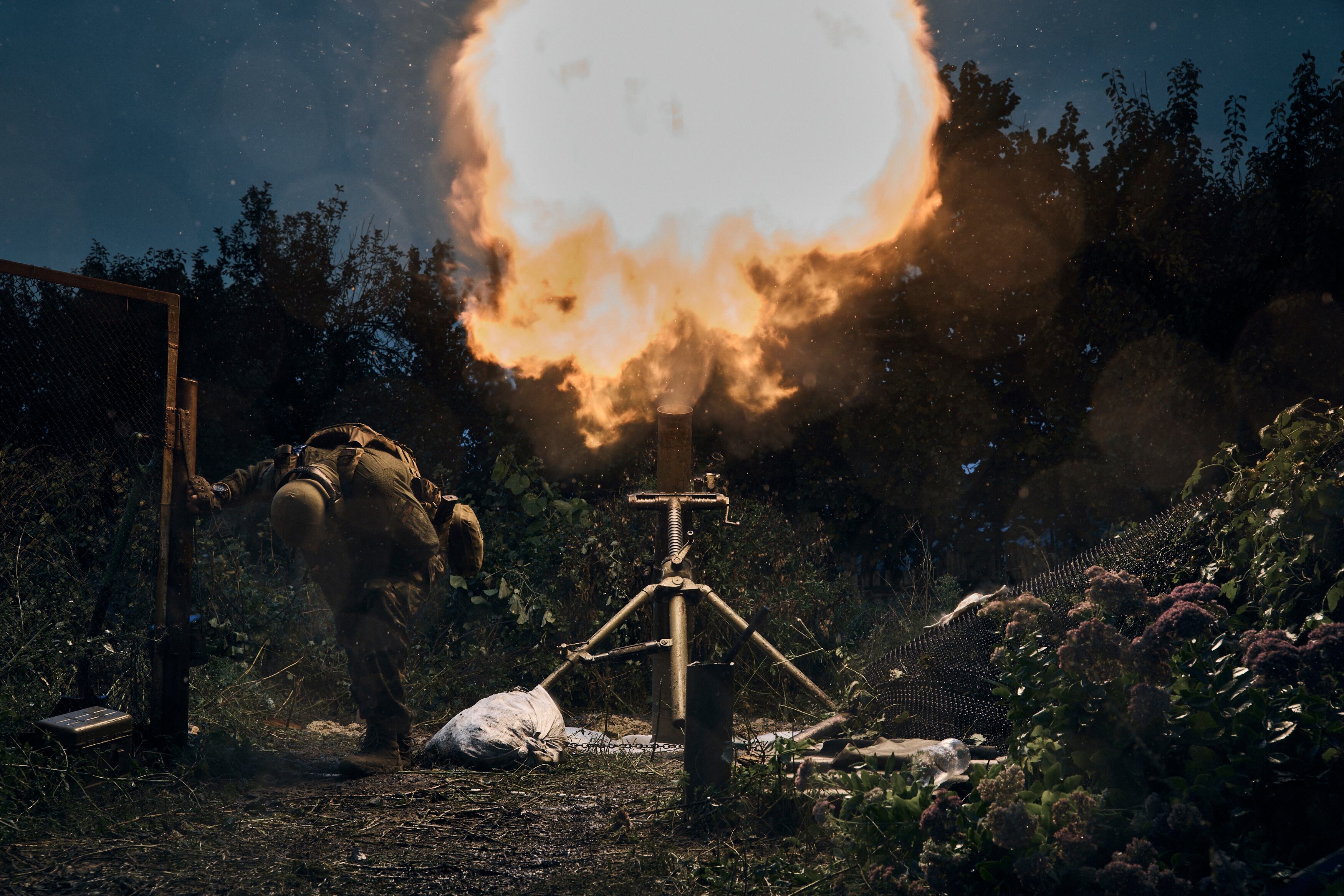SIMI VALLEY, Calif. — Russia is burning through its munitions stockpiles at an “extraordinary” rate as its invasion of Ukraine grinds on into its tenth month, the nation’s top intelligence official said Saturday.
And Russia does not have enough ability to replace those weapons on its own, Director of National Intelligence Avril Haines said during a fireside chat at the Reagan National Defense Forum here at the Ronald Reagan Presidential Library.
Haines would not provide specific figures on how fast Russia’s munitions are depleting, but said it is happening “quite quickly.”
“It’s really pretty extraordinary, and our own sense is that they are not capable of indigenously producing what they are expending at this stage,” Haines said. “That’s why you see them going to other countries, effectively, to try to get ammunition.”
Specifically, Russia’s reserves of precision munitions are running out the fastest, she said. The U.S. intelligence community and allies are paying close attention to the health of Russia’s munitions stockpiles, and how they could be used in other conflicts, she said.
Haines said Russia has obtained some artillery ammunition from North Korea, and that the intelligence community is also tracking those exchanges, but added “it’s not been a lot, at this stage.”
Haines’ comments come as the U.S. is trying to boost its own munitions production capability as it continues supplying arms to Ukraine. For example, the Army last week awarded Lockheed Martin a $431 million contract to produce more M142 High Mobility Artillery Rocket System, or HIMARS, launchers, which the U.S. has in recent months sent to Ukraine.
Earlier in the day , Raytheon Technologies chief executive Greg Hayes raised concerns about the pace Stinger and Javelin munitions are being used in Ukraine, and industry’s own ability to keep up.
While Raytheon and Lockheed Martin are building about 400 Javelins per month, Hayes said, “in the first 10 months of the war, we’ve essentially used up 13 years of Stinger production, and five years worth of Javelin production. So the question is, how are we going to resupply, restock the inventories?”
Army Secretary Christine Wormuth said on that panel that her service has pushed $6 billion in contracts to industry to help replenish munitions. This includes the Excalibur artillery rounds, built by Raytheon and BAE, and National Advanced Surface-to-Air Munitions Systems, an air defense system also known as NASAMS from Raytheon and Kongsberg, both to supply Ukraine and to rebuild U.S. stocks.
“Certainly, we all would like to have greater stockpiles than we had in the last several years,” Wormuth said. “But I do think we’ve done a lot to put money on contract with industry, to increase production of these systems.”
Haines said that Russia is trying to obtain more precision munitions from Iran — which has already provided drones that Russia has used to attack Ukraine’s power infrastructure.
Haines called Russia’s attacks on Ukraine’s electrical grid, gas, heating, and other elements of its civilian infrastructure “outrageous” and “illegal.”
One of Russia’s motivations for carrying out these attacks is to undermine Ukraine’s will to fight, she said, but the United States sees no signs that the approach is succeeding. While such a lessening may happen over time, she said, it depends on how resilient Ukraine’s critical infrastructure is, and the West’s ability to help the nation defend those targets.
Russia’s invasion has also devastated Ukraine’s economy and attacks on critical infrastructure will worsen the economic toll.
Haines said the pace of the war — along with Russia’s steep casualty rates — has slowed recently, as winter sets in and in the wake of Russia’s withdrawal from the Kherson region, most fighting now occurring in the Donetsk region.
That will likely continue over the next few months, she said. But it remains to be seen what the next counteroffensive will look like once the spring thaw sets in, she said.
Both nations will try to resupply and regroup their forces to prepare for the resumption of major fighting, Haines said, but the U.S. is skeptical as to whether Russia will be ready. She said she is more optimistic that Ukraine will be better prepared.
Haines also said Russian President Vladimir Putin was likely surprised by his military’s failure to swiftly capture Ukraine. In recent months, he has learned more about his military’s on-the-ground situation, she said — but perhaps not enough to make the changes he would need.
“He is becoming more informed of the challenges that the [Russian] military faces,” Haines said. “But it’s still not clear to us that he has a full picture at this stage of just how challenged they are. We see shortages of ammunition, poor morale, supply issues, a whole series of concerns that they’re facing.”
Stephen Losey is the air warfare reporter for Defense News. He previously covered leadership and personnel issues at Air Force Times, and the Pentagon, special operations and air warfare at Military.com. He has traveled to the Middle East to cover U.S. Air Force operations.





